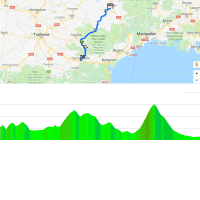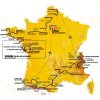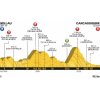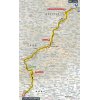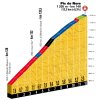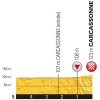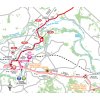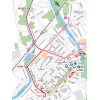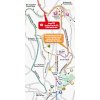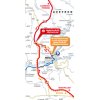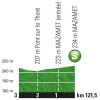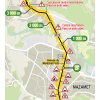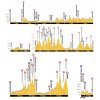The riders start near the Millau Viaduct, which is the tallest cable-stayed road bridge in the world, and set off for a hilly stage with the Col de Sié and Pic de Nore standing out.
Shortly after the start the peloton is offered to stretch the legs on the Côte de Luzençon, while others may want to use the hill as a launch platform to take. The 3.1 kilometres climb at 5.9% is crested at kilometre 9. The route continues on rolling roads until the Col de Sié appears at kilometre 54. It is a 10.2 kilometres climb with an average gradient of 4.9%. The first half is steepest, while the second half features some flat sections.
A long drop – yet, with intermediate uphill stretches – takes the riders to the foot of the Pic de Nore. The first 7 kilometres are averaging 7.5%, while the seventh kilometer is steepest at 9.4%. The next 4 kilometres go up at 5.4%, while the climb flattens out to a false flat just before the summit, which is crested with 41.5 kilometres left to race. A mega-long plunge runs to 6 kilometres on the flat before the ultimate kilometre once again is a false flat.
The last time the Tour de France visited Carcassonne was in 2016. The 11th stage left here for a stormy race on the roads to Montpellier. Chris Froome and Peter Sagan attacked in the finale with the World Champion winning the stage honours and the Briton putting some time into his opponents.
The first three riders on the line win time bonuses of 10, 6 and 4 seconds. The intermediate sprint (at kilometre 121.5) does not come with a time bonus, it’s a sprint for green jersey points.
Read also: results/race report 15th stage 2018 Tour de France.
Tour de France 2018 stage 15: Route maps, height profiles, and more
Click on the images to zoom
